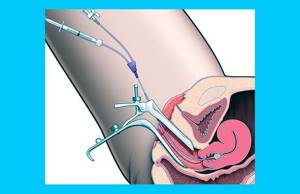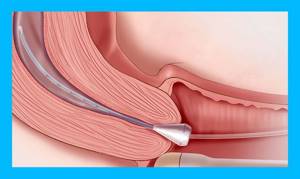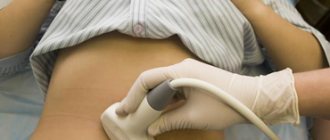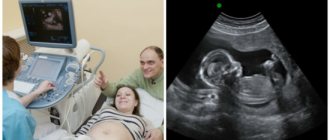MSH of the fallopian tubes is usually prescribed for adhesions, which, in turn, make it impossible to get pregnant. Metrosalpingography is a special procedure during which the condition of the uterine cavity and fallopian tubes is assessed. It is carried out using x-ray equipment and using a contrast agent.
This is how the fallopian tube is displayed in the MSG image with contrast.
What is MSG
Another name for metrosalpingography is hysterography. The main reason for resorting to this procedure is infertility (to identify the causes). Manipulation is carried out only for gynecological indications and after special training. MSG is usually done in a clinic, but in special cases, diagnostics in a hospital setting are indicated.
Infertility, as a rule, occurs against the background of adhesions, obstruction of the fallopian tubes, which are provoked by previous surgical operations in the pelvis, herpes, chlamydia and other bacterial infections. After the MSG procedure, it becomes possible to prescribe the most appropriate treatment.

The picture shows the procedure for tubal MSG.
Indications for metrosalpingography
MSG in gynecology is prescribed in the following cases:
- Suspicion of obstruction of the fallopian tubes.
- Diagnosis of benign and malignant neoplasms in the uterus.
- Uterine bleeding of unknown etiology.
- The need for a detailed study of the reproductive organ and appendages, determining the size, shape and lumen.
- Before ovulation stimulation.
- Congenital and acquired deviations in the development of the genital organs.
- Isthmic-cervical insufficiency.
- Delayed sexual development in adolescent girls.
Contraindications to the procedure
Metrosalpingography cannot be performed in the following cases:
- suspicion of pregnancy;
- individual intolerance to iodine and contrast agent;
- heart and blood vessel diseases;
- bleeding;
- lactation;
- bacterial and viral infections in the acute stage;
- violations of the vaginal microflora;
- chronic pathologies of the reproductive system;
- any inflammatory processes.
The main goal of the diagnostic procedure is to identify the adhesive process or ensure its absence. You should know that it is impossible to assess the condition of the endometrium using MSH.
Preparing for tubal MSG
It is necessary to carefully prepare for hysterography to avoid side effects in the future. General recommendations when preparing for the MSG:
- Sexual rest a few days before the examination.
- Stop using medicinal vaginal products and douching a week before metrosalpingography.
- Correction of the diet, exclusion of gas-forming products.
- Cleansing enemas the evening before the procedure.
- Emptying the bladder and bowels immediately before MSG.
- Taking antispasmodics before manipulation to reduce pain and prevent involuntary muscle contractions (for example, No-shpa or Spazgan).
In addition, the woman must undergo tests:
- General analysis of urine and blood.
- Vaginal smear examination.
- Test for HIV, hepatitis and syphilis.
- Determination of hidden infectious processes.
- Detection of sexually transmitted infections.

Before MSG of the fallopian tubes, the patient must undergo many tests.
Consequences
With proper preparation for MSG, the likelihood of complications tends to zero. It is important to observe aseptic conditions during the manipulation process. Unpleasant consequences of MSH usually develop in those women who have not previously been tested or use the services of unqualified specialists:
- infection - when an x-ray substance passes through the oviduct from the uterus to the ovary, an infection can be spread;
- trauma – careless handling of the catheter can lead to damage to the uterine mucosa or cervical canal, which will also be complicated by inflammation;
- pain - appears for various reasons, including due to spasm of the cervix and uterus;
- bleeding - may occur due to damage to the integrity of the tube or reproductive organ;
- irradiation - diagnostics involves the use of an X-ray machine, which negatively affects the condition of cells.
You can plan a pregnancy after MSG in a month if both tubes are passable.
If the diagnosis is disappointing, the woman is recommended additional treatment, which involves restoring the functionality of the oviducts. During the procedure, it is recommended to relax as much as possible, despite the discomfort, since increased tension in the pelvic muscles can lead to distorted results. Share:
How is metrosalpingography performed?
The optimal time for manipulation is 7-14 days of the menstrual cycle. After all, it is during this period that the endometrium is quite thin, and it is possible to study in detail the condition of the fallopian tubes and uterus.
The procedure time is approximately 40-50 minutes. It is carried out in a special gynecological office equipped with the necessary equipment. A woman sits in a chair, raises her legs and bends them at the knees.
Hysterography is carried out in the following sequence:
- antiseptic treatment;
- creating pressure in the uterine cavity using special forceps;
- injection of a contrast solution into the uterus;
- fixation with a photograph a few minutes after administration of the solution;
- the second image is 20 minutes after the administration of the contrast agent.
If the injected solution leaves the uterus and fills the abdominal cavity, then the fallopian tubes are completely patent. If adhesions are present, they can be seen in photographs taken during the procedure. After MSG, the patient may experience symptoms such as bloody vaginal discharge, deterioration in health, and nagging pain in the lower abdomen for several days. Antibiotics are prescribed to prevent the inflammatory process.

The process of introducing a contrast agent into the uterus during MSG of the fallopian tubes.
How to prepare for pregnancy
• Quit smoking 2-3 months before conception - together with your husband. • Refuse to consume alcohol in any form 2-3 months before conception - together with your husband. • Reduce the amount of coffee and strong tea you consume (any caffeine-containing drinks). • In a cycle in which conception is possible, do not visit the bathhouse, sauna, do not take a hot bath, do not allow overheating and hypothermia. • During the conception cycle, it is not advisable to fly on airplanes or vacation in distant countries where the climate is strikingly different from what is usual. • Do not practice any diets aimed at losing weight. • Do not engage in active sports, fitness, do not exercise your muscles and especially your abdominal muscles. • Do not take any medications without consulting a doctor and carefully reading the instructions for the drug. • Try not to get sick, and if you get sick, treat yourself with folk remedies. If antibiotics were used during treatment, a woman needs to postpone conception for a month, and a man – for 2-3. • Take multivitamins, and especially folic acid (prevention of fetal malformations). You can continue taking vitamins during pregnancy. To prepare for pregnancy, folic acid before pregnancy should be taken with your spouse for 2-3 months before the expected conception, and then in the first 3 months of pregnancy. • If you are taking oral contraceptives, remember that in the first three months after stopping them, you have an increased likelihood of multiple pregnancies (the so-called rebound effect - withdrawal effect). Think about it - do you need it? • Your work should not be associated with occupational hazards - radiation, chemicals, mercury, vibration, etc. Modern computers do not harm pregnancy. If there are hazards in your work, decide on the issues of moving to another area or changing jobs. • Your diet should be varied, balanced and easily digestible. • If you need to take any medications on a regular basis, discuss with your doctor which medications you will take during a future pregnancy, taking into account the possible effect on the fetus. • Visit the dentist and get your teeth in order. • Well, in the end, it’s worth saying that in the vast majority of cases, pregnancy occurs on its own and proceeds exactly as it does. All our tricks can only slightly reduce risks, but never eliminate them completely. So - GOOD LUCK!
Advertising
Types of fallopian tube MSG
Metrosalpingography is carried out using ultrasound and selective methods. Next, let's look at what their differences and specifics are.
Ultrasound metrosalpingography
In some cases, the standard hysterography procedure is contraindicated. As an alternative, MSG with ultrasound diagnostics is used. It is also carried out in the gynecological department, but with the help of an ultrasound machine. The contrast agent is replaced with saline solution heated to human body temperature. The solution is injected into the uterus using special instruments.
This type of examination, compared to radiographic examination, is safer and painless. With its help, the condition of the organs of the female reproductive system is quickly assessed. Recovery from it is quick and, as a rule, no side effects are observed. Only the appearance of small discharge with a pink tint is possible.
Selective metrosalpingography
The usual hysterography procedure causes a lot of discomfort, causing severe pain when installing a clamp to regulate pressure and when filling the uterus with a contrast agent. There is a selective version of this method. It is more gentle and less painful. A thin conductor is used to take an image and supply a diagnostic solution. As a result, the substance is evenly distributed, and there is no need to create a high level of pressure in the uterus. After selective metrosalpingography, any complications rarely arise.
Price for MSG
The cost of the procedure depends on several factors. This is the status and location of the clinic, its reputation, type of technique, etc. In Russia, the price ranges from 2,500 to 15,000 rubles.
Methodology
The diagnostic procedure begins with the patient being given an injection with an antispasmodic solution. For certain indications, drugs that suppress gland secretion, for example, Atropine, can be used. Half an hour after the injection, the patient is invited to the X-ray room.
The procedure is carried out under the close supervision of two specialists. The gynecologist inserts a catheter into the cervix, and the radiologist monitors the behavior of the contrast agent and takes pictures.
Once the catheter is inserted into the uterus, the concentrate is delivered through it. Under pressure, it fills the cavity of the reproductive organ and passes through the pipes. Based on the results of the behavior of the X-ray substance, one can judge the functionality of the oviducts.
Selective
A distinctive feature of this diagnostic procedure is that it does not involve filling the uterine cavity with X-ray material. This allows you to minimize the likelihood of complications resulting from contact of the solution with the mucous membrane.
In selective tubal MSG, a catheter is passed through the uterine cavity directly to the oviduct. The contrast agent is delivered into the tube under pressure.
An invaluable advantage of this procedure is that the solution can separate small adhesions, if any. In a simple and gentle way, you can restore the patency of the oviducts.
According to patient reviews, selective metrosalpingography is a less painful procedure than a conventional one. This is because the uterus is not filled with a contrast agent.
Consequences and complications after MSG
The procedure is considered completely safe and in most cases does not cause serious consequences. But there is still a risk of the following complications:
- Menstrual irregularities.
- Allergic reactions to contrast agent.
- Inflammation of the pelvic organs.
- Bleeding due to damage to the uterus and nearby organs.

One of the complications may be inflammation in the abdominal cavity. The pain, in this case, is localized in the lower abdomen. Sometimes the pain radiates to the side. All these consequences are possible, but only if the rules of preparation for the procedure are violated and the correct technique is not followed. Therefore, it is very important to contact an experienced and qualified specialist.
results
During a metrosalpingography, the radiologist takes several pictures. They will clearly show whether the solution has entered the abdominal cavity. If not, then it becomes possible to determine in which area the difficulty arose. There are several options for MSG results.
- Total obstruction. In this case, the oviducts are blocked on both sides. The woman is diagnosed with tubal infertility.
- Unilateral obstruction. This conclusion is issued when, on the one hand, the solution entered the abdominal cavity, and on the other, remained inside the oviduct.
- Partial obstruction (can be unilateral or bilateral). This situation is the most dangerous, since with partial obstruction, fertilization can occur, but the fertilized egg will no longer be able to pass through the adhesions, resulting in an ectopic pregnancy.









